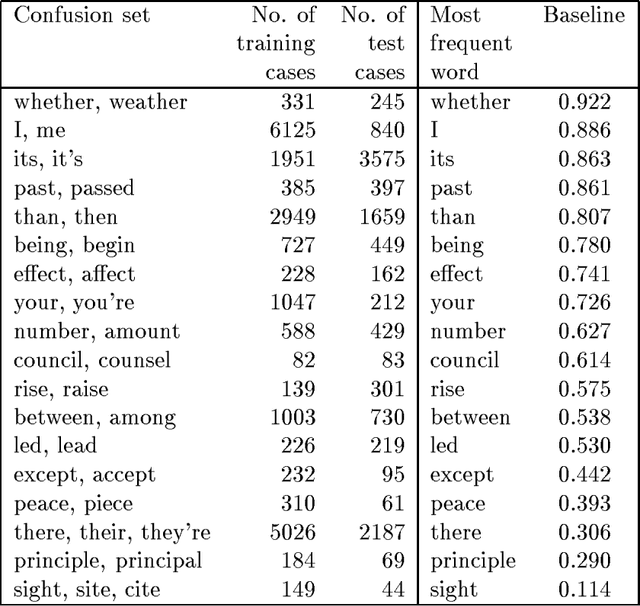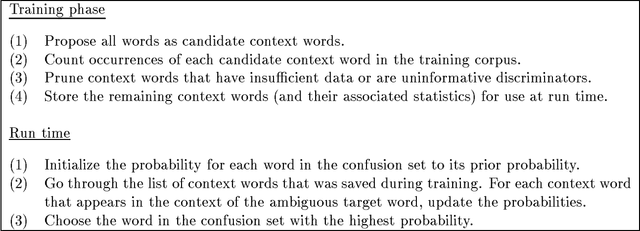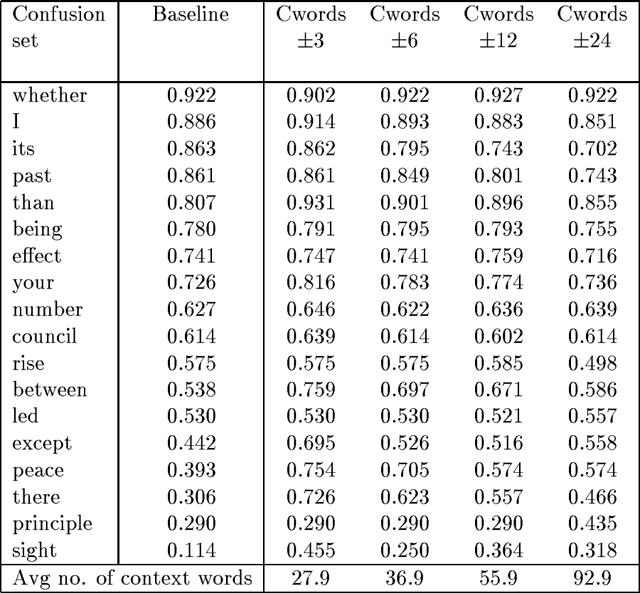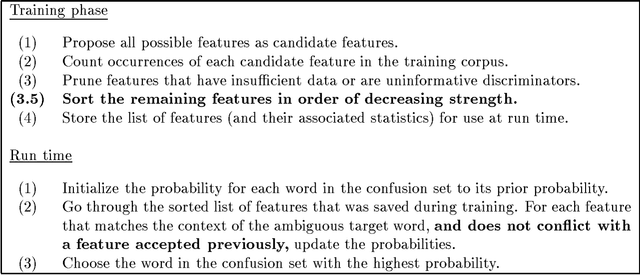A Bayesian hybrid method for context-sensitive spelling correction
Paper and Code
Jun 03, 1996



Two classes of methods have been shown to be useful for resolving lexical ambiguity. The first relies on the presence of particular words within some distance of the ambiguous target word; the second uses the pattern of words and part-of-speech tags around the target word. These methods have complementary coverage: the former captures the lexical ``atmosphere'' (discourse topic, tense, etc.), while the latter captures local syntax. Yarowsky has exploited this complementarity by combining the two methods using decision lists. The idea is to pool the evidence provided by the component methods, and to then solve a target problem by applying the single strongest piece of evidence, whatever type it happens to be. This paper takes Yarowsky's work as a starting point, applying decision lists to the problem of context-sensitive spelling correction. Decision lists are found, by and large, to outperform either component method. However, it is found that further improvements can be obtained by taking into account not just the single strongest piece of evidence, but ALL the available evidence. A new hybrid method, based on Bayesian classifiers, is presented for doing this, and its performance improvements are demonstrated.
 Add to Chrome
Add to Chrome Add to Firefox
Add to Firefox Add to Edge
Add to Edge